Author: Nathan Chadwick
Images: Manufacturers
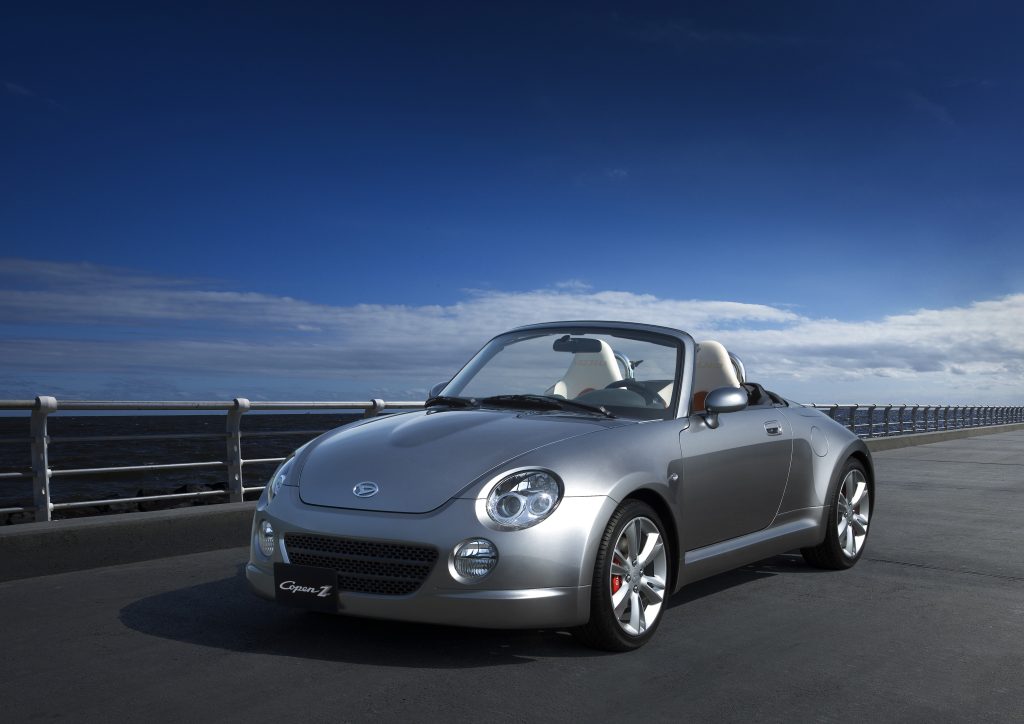
As I sit down to write this feature, Jaguar’s bold new EV hope – you may have other words for it – has just been revealed.
It’s going to be a very large car, with a big range; it’s also going to weigh as much as the average moon. All that for a GT car that’ll no doubt be as awkward to park as it was avoiding the online hysteria about that famous advert. The real answer, of course, is EVs work best for city cars – but sadly the margins on these are nano-particle slight, and expensive to buy and challenging to charge.
The Japanese cottoned on to the joy of small cars many decades ago; this island nation has limited space, after all. Therefore it brought us the kei car – tiny cars, tiny capacities, but available in a vast variety of shapes and sizes, usually with some hilariously bonkers names.
Of course, sports cars are part of that make-up – after all, cars like the Austin-Healey Sprite and MG Midget encapsulate the tiny is mighty philosophy, and these kei cars are arguably a continuation of that. Lightweight, revvy and entertaining to drive – and often with characterful design – the kei sportscar is an underappreciated part of the automotive landscape, so we’ve brought together some of the finest tiny sports cars Japan has come up with. All of these cars may have only two seats and little room for much else, but arguably they’re far more suited today’s clogged roads and punitive speed restrictions than a 3000kg EV so large it ought to come with its own escort vehicle in front of it.
Welcome to our celebration of all things small, but with big personalities. Which one would you choose?
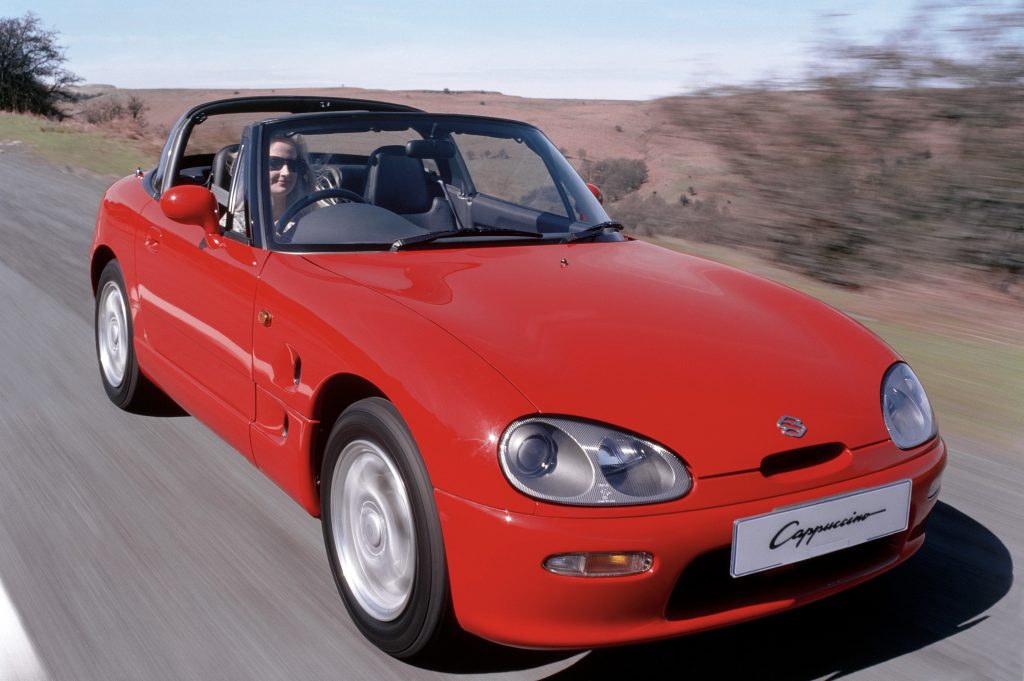
1. Suzuki Cappuccino
In the 1980s, Suzuki had an image problem – it wasn’t the most dynamic of brands in the eyes of the buying public. It therefore set about changing this perception with the Cappuccino, a suitably frothy little sports car with a 657cc turbocharged three-cylinder engine.
To comply with the kei car rules of the time, it measured 3.3 metres long and 1.4m wide, and had just 63bhp. However, it weighed just 725kg thanks to the use of aluminium in the bonnet, roof and roll bar, which gave it suitably nippy performance and, thanks to 50/50 weight distribution, neat handling too.
It was also customisable for your needs – instead of a canvas top you could set up the Cappuccino with either a coupe, targa or convertible setup, simply by storing the elements in the back of the car.
Unlike many kei cars, the Cappuccino was brewed for the UK market too. Such was the demand for the car in Japan, the UK had little over 1100 cars available and had to be restricted to just two colours, red or silver, with the vast majority being the former. Imports came to an end in 1995 due to tightening emissions regulations in Europe – which meant we Brits missed out on a revised engine with more torque, plus the option of a three-speed automatic. A higher-spec version with a limited-slip differential, ABS and an airbag was also made available. We wonder if we could stow one of these away in someone’s luggage from Japan…
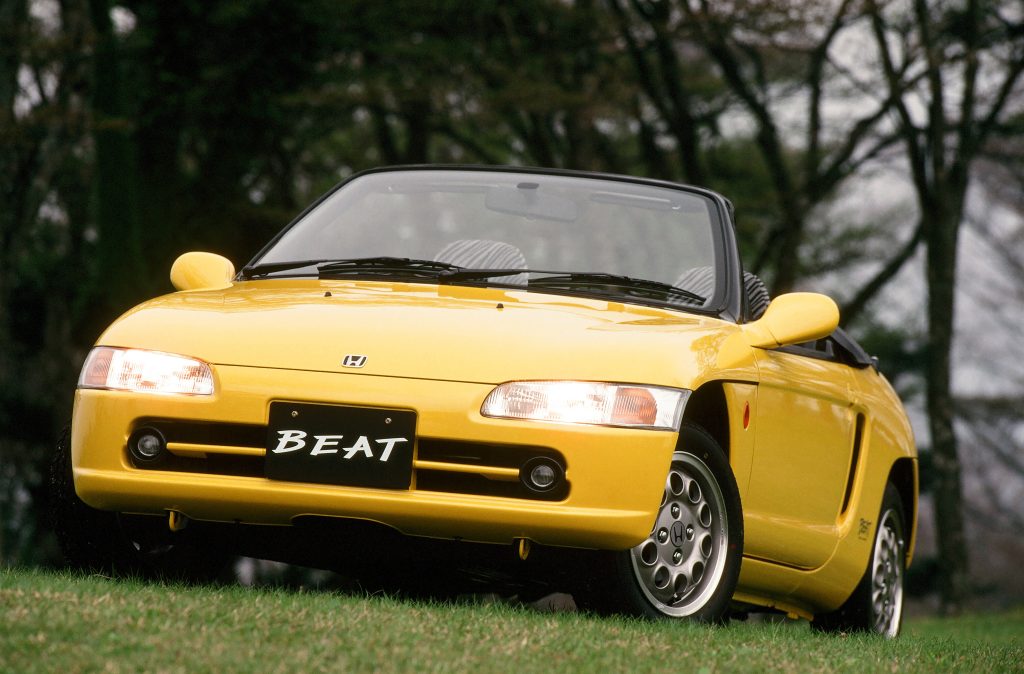
2. Honda Beat
The kei phenomenon is very much a Japanese creation, but the origins of the Honda Beat are rather more Italian. Pininfarina originated the concept and, so impressed was Soichiro Honda, that he approved it himself personally – the very last Honda to be bestowed that honour.
It was also typically Honda mechanically, which makes it very un-typical for a kei car. Many kei cars use forced induction to wring the maximum amount of torque from such small engines. Instead, the 656cc three-pot in the Beat is naturally aspirated, and revs to a heady 8100rpm. The engine is a miniature marvel – the MTREC system (Multi Throttle Responsive Engine Control, if you were wondering) plants individual throttle bodies on each of the cylinders.
As per kei car rules it was limited to 63 bhp, and its top speed was electronically limited to 84mph, but its 760kg kerb weight and revvy nature endeared it to 33,600 willing customers.
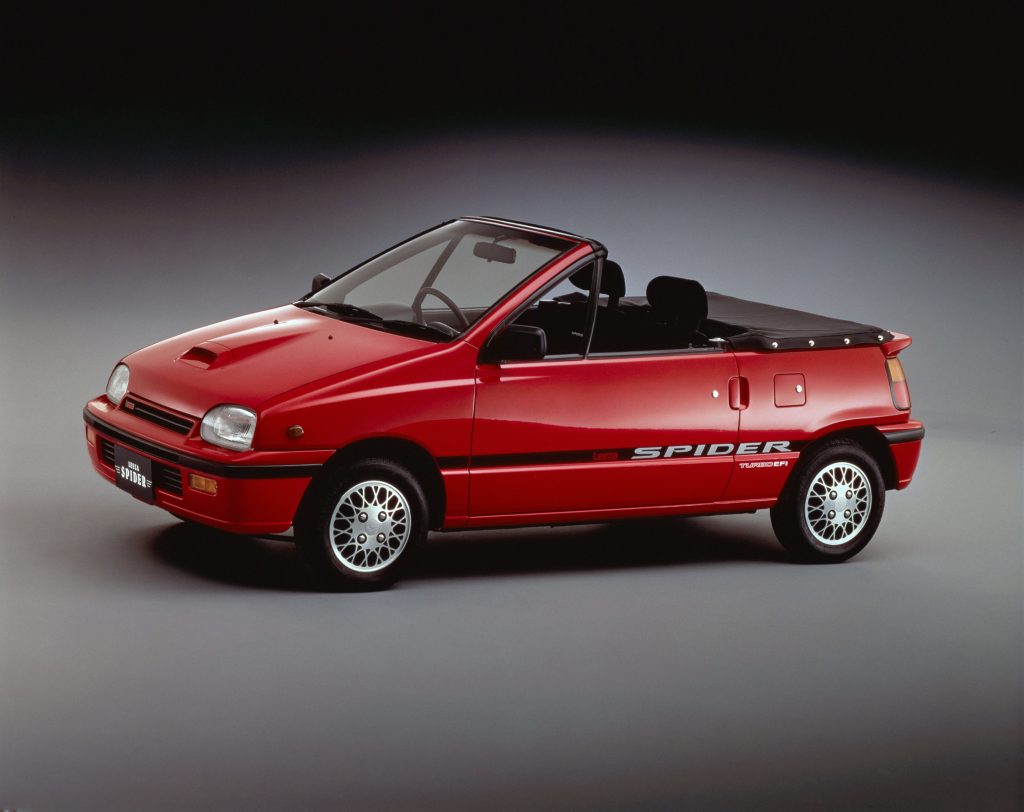
3. Daihatsu Leeza Spider
Daihatsu had plenty of form for small, nippy cars with three cylinders – those old enough to remember the manic Charade GT-TT of the late 1980s will probably be feeling a huge wave of nostalgia right now. Followed by some sadness that they’re almost extinct now…
The Leeza Spider, unlike the bespoke-build Cappuccino and Beat, was based on the 3-door coupe/hatchback Leeza model. The original Leeza had seen some success during the 1980s with model lines such as the, ahem, Cha Cha, and sporty variants like the fuel injected TR-ZZ. The latter came with all sorts of suspension and body kits, but the prototype two-seater Spider version previewed at the 1989 Tokyo Motor Show drew plenty of attention.
The production was based upon the second-generation and amusingly named OXY-R model launched in 1990. Put on sale in 1991, it featured a turbocharged 659cc engine that was good for 63bhp, and was even lighter than the Suzuki and Honda – it weighed just 660kg. However, it failed to capture the imagination quite like the other kei sportscars and production wound up after just a couple of years. However, Daihatsu wouldn’t be done with the kei sportscar phenomenon…
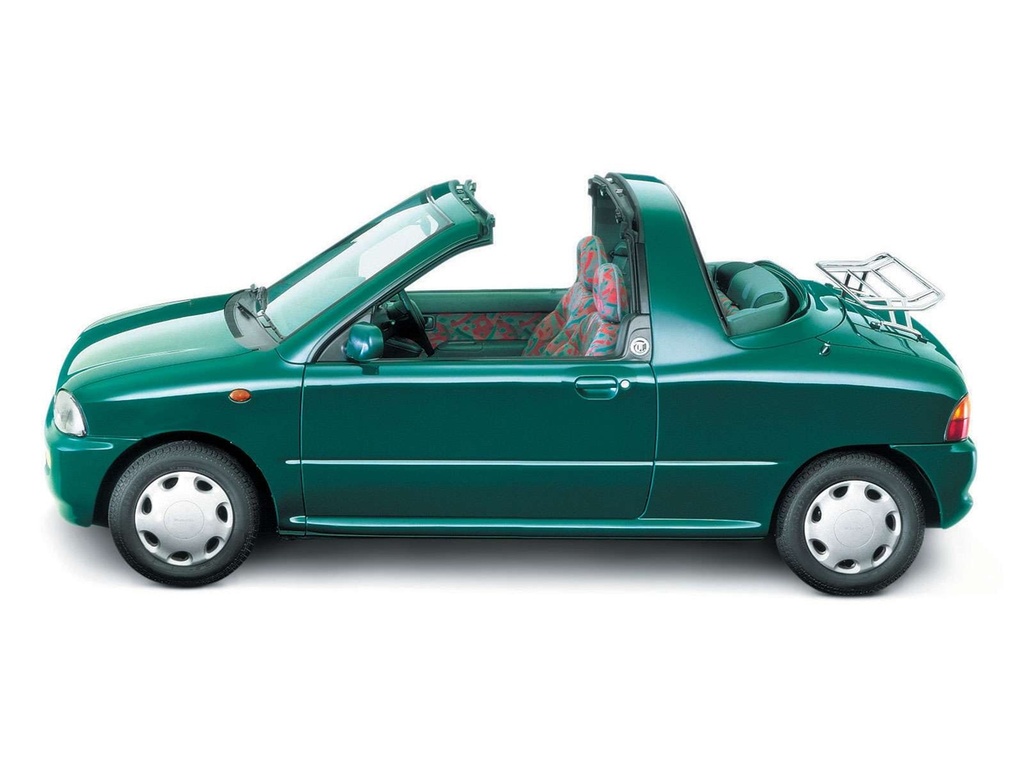
4. Subaru Vivio
Rallying enthusiasts with long memories may fondly remember the Vivio – at a time of fire-breathing Legacy and Impreza Group A rally machines, it was actually the tiny Vivio that gave a young Colin McRae his Safari Rally debut in 1993.
Unlike most of the others on this list, the Vivio used four-cylinder engines. Vivio, incidentally, refers to the 660cc capacity in Roman numerals (VI, VI, O), and Subaru was certainly on a march in terms of choice – you could have three doors or five, front-wheel drive or four, supercharged or naturally aspirated engines, and automotive, CVT or manual transmissions.
However, for those seeking the sunlight the T-top was the one to have, with a targa top. Built to celebrate Subaru’s 40th anniversary in 1993, it was originally fitted with a naturally aspirated, fuel injected engine allied to either the five-speed manual or CVT box. Built to order via Takada Kogyo (who also built the Nissan Figaro), around 3000 were built.
A year later, 1000 more rolled out of the factory, this time sporting a supercharged, 63bhp four-cylinder engine. Called the GX-T, you could only get the CVT gearbox. Not quite Colin McRae-spec, but probably a bit more fun in the sun…

5. Daihatsu Copen
The kei car sportscar craze had died out at the end of the 1990s, but the 2002 launch of the Daihatsu Copen reignited interest in the breed.
Originally powered by a 659cc twin-scroll turbocharged four-cylinder engine, allied to either a five-speed manual or four-speed automatic. With a rev limit of 8500rpm and 10-second 0-60mph time gave it enough urge to make any B-road endeavour entertaining, though British reviewers complained about a crashy ride. British versions of this engine actually had an extra 4bhp over their Japanese counterparts, and was 6mph faster at the top end (110mph), though us Brits did get slightly less torque.
Nevertheless, its rev happy engine and cute looks, inspired by the Audi TT and the Nissan Figaro, won it a cult following, though some European markets couldn’t quite get on with the Japanese spec-engine. Instead they got a Toyota-sourced 1.3-litre engine fitted with 86bhp.
The best bit, however, has to be the electric folding roof (though some were sold with removable panels), which meant winter driving wasn’t quite as bleak as some small convertibles can be. However, inadequate rust-proofing for UK roads can mean that British-sold cars are corroding from the rear wheelarches out, plus the boot floor. It got so bad that Daihatsu UK even did some repairs under warranty.
The Copen lasted until 2012, having left Europe some years prior, but a new version was launched for Japan only in 2014.
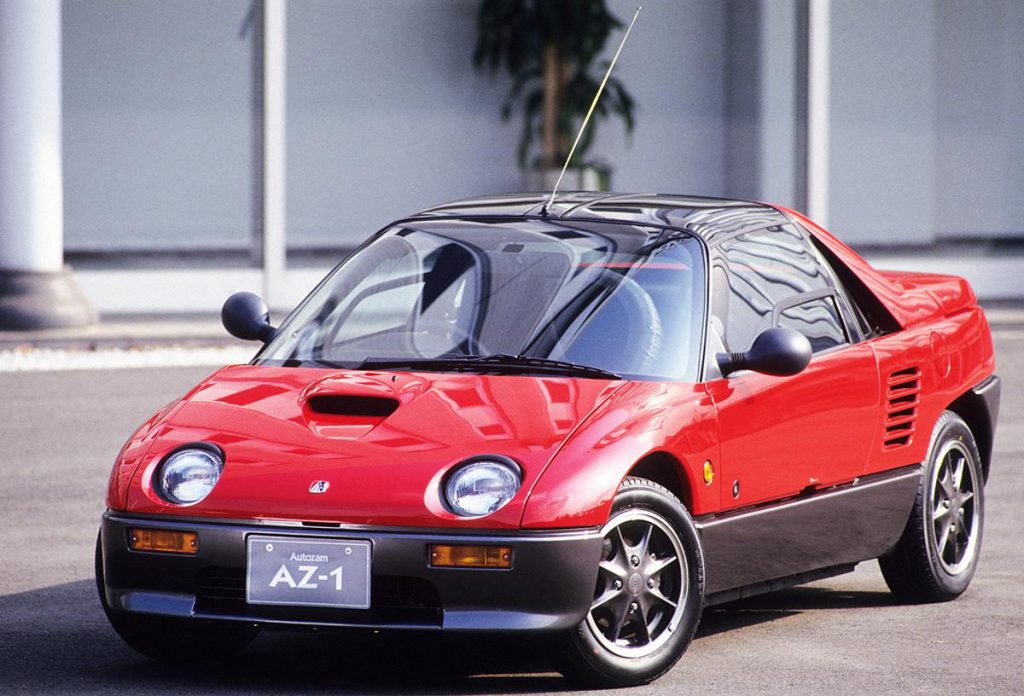
6. Autozam AZ-1
Looking like a mixture between a Group B rally car and hypercar that’s been shrunk in the wash, few kei cars – or indeed any cars – gather a crowd quite like the Autozam AZ-1.
Originally developed as a Suzuki project, it was eventually taken over by the team behind the MX-5 and developed as a Mazda project and then further developed with the help of Lotus in the UK.
Powered by a turbocharged three-cylinder engine producing 63bhp at 6500rpm, it was every bit the tiny exotic, with gullwing doors. However, it was launched into the eye of the global recession, and was seen as too expensive to compete with the Beat or the Cappuccino – it was also too close in price to an MX-5. Even by the standards of the kei class it was viewed as too cramped – and as a result, just shy of 4400 were sold in two years.
Sales were so slow that in a bid to zest up the figures Mazda unleashed the Mazdaspeed, which featured extra body adornments, a sportier suspension set up, strut bars, a mechanical limited-slip differential and improved engine breathing. Nowadays the AZ-1s are in high demand – we saw one in the UK for £25,000 at this year’s Festival of the Unexceptional…
After Mazda finished production, Suzuki sold its version of the car, called the Cara – though this only sold little more than 500.
Which would you choose? We would love to hear at hdc@hagerty.co.uk.